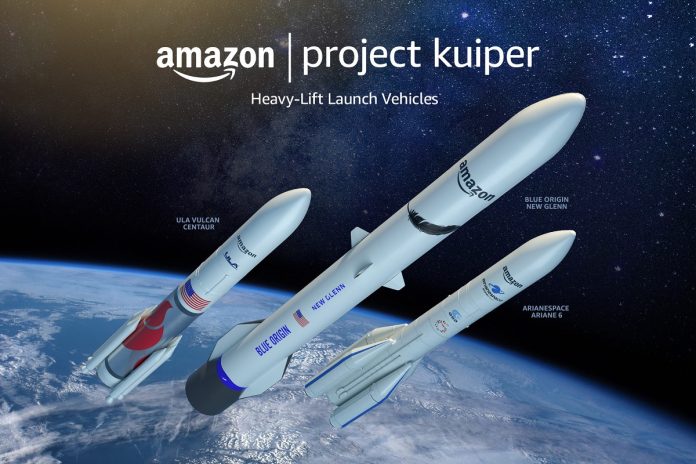E-commerce juggernaut Amazon has embarked on the real-world trials of its internet satellite network, Project Kuiper, following a successful prototype launch last week. Project Kuiper is set to compete with SpaceX’s Starlink, aiming to offer global broadband internet connectivity through an initial constellation of 3,236 satellites positioned in low Earth orbit.
This significant step forward took place during a recent launch where two prototype satellites were transported into space aboard an Atlas V rocket, managed by United Launch Alliance (ULA), a joint venture involving aerospace giants Lockheed Martin and Boeing. Roughly 45 minutes after liftoff, Amazon confirmed the establishment of initial contact with both satellites, marking a crucial milestone as they commence testing the technology designed to link with ground-based antennas for global internet coverage.
Rajeev Badyal, Amazon’s VP of technology for Project Kuiper, expressed enthusiasm for this achievement, saying, “There’s a long way to go, but it’s an exciting milestone all the same”. He expressed gratitude to the Project Kuiper team and their partners at United Launch Alliance for their dedication in getting to this point.
Amazon has committed to an extensive investment in space exploration, signing substantial contracts with ULA, European firm Arianespace, and Blue Origin, owned by Jeff Bezos. Over the next five years, they plan to conduct 77 additional launches, amounting to an estimated cost of US$7.4 billion. Amazon aims to commence beta testing of its internet service with commercial customers by the end of the following year.
Badyal acknowledged the enormous effort required to develop a new space system from scratch but stressed the team’s commitment to delivering affordable broadband to underserved regions.
Amazon faces competition from SpaceX’s Starlink, which already boasts over two million customers and has established partnerships with ISPs like Telstra and Optus. In May, Starlink became the preferred provider for Australian satellite internet users, surpassing the number of NBN SkyMuster customers.
The core technology for both Amazon and Starlink is similar, employing thousands of satellites to act as relays between customers and ground stations, thus extending internet access to traditionally underserved areas around the world.
While Starlink generated US$1.4 billion in revenue for SpaceX last year, it operated at a loss. Nevertheless, Starlink showcased its significance by playing a crucial role for Ukrainian forces during the conflict with Russia.
SpaceX secured a lucrative contract with the US Department of Defense this year after threatening to cut off Ukrainian internet access unless the Pentagon contributed funds.
Despite their benefits, the growing number of objects in orbit has raised concerns among scientists, affecting astronomical observations. In March, a group of scientists published a paper in Nature highlighting the dramatic transformation of the night sky due to planned satellite launches and existing satellite mega-constellations, emphasizing the need for oversight and consideration of the impact on astronomical data.




